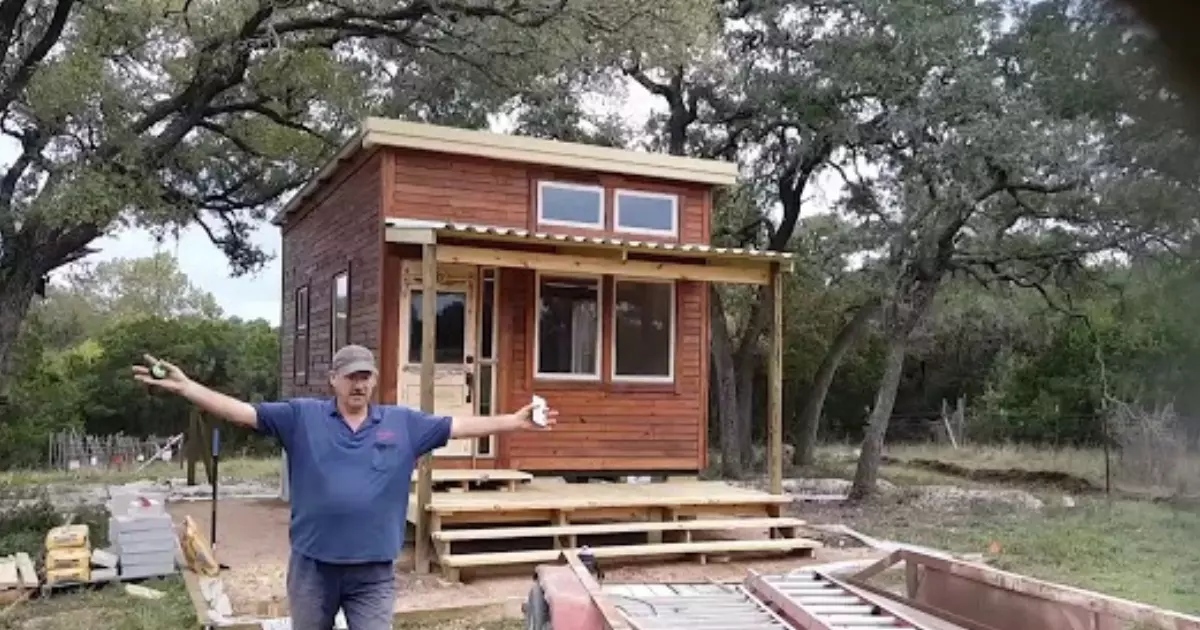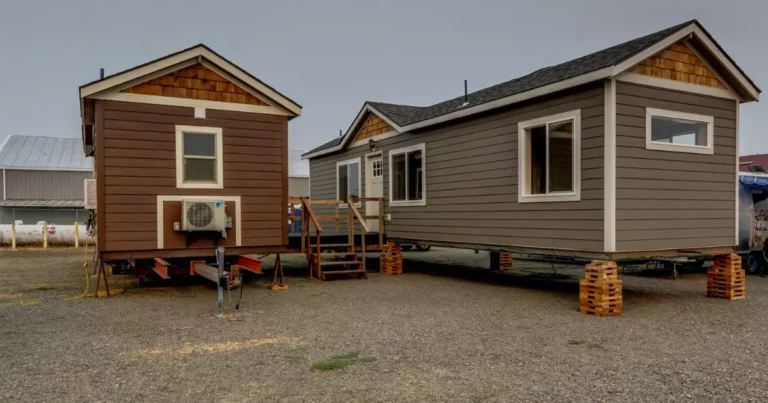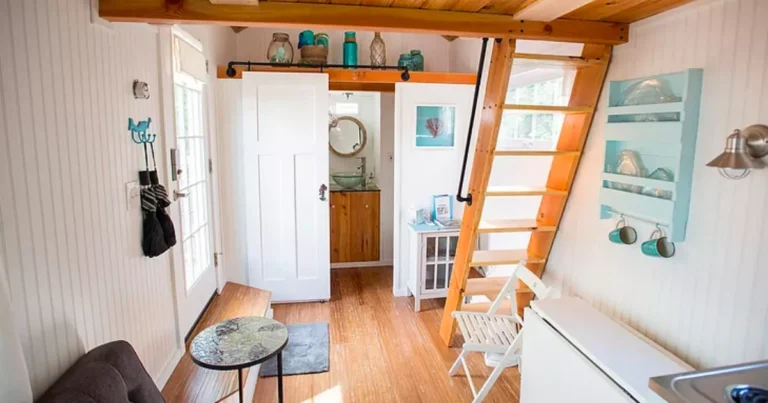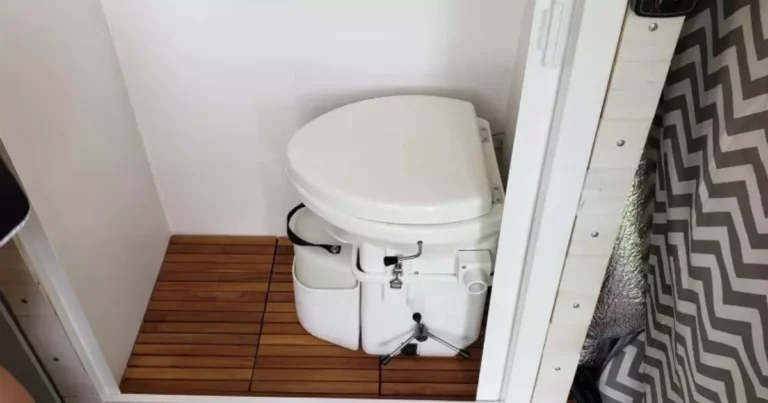How to Move a Tiny House Without Wheels? Steps & Guide

Moving a tiny house without wheels might seem like a daunting task, but with careful planning and the right approach, it can be a smooth and successful endeavor. Whether you’re relocating your tiny house to a new location or simply want to change its position on your property, this article will guide you through the process step by step.
Assessing the Situation
Determining the Reason for the Move
Before you start the moving process, it’s important to determine why you want to move the tiny house. This will influence your planning and decision-making.
Checking Local Regulations
Check with your local authorities to understand any regulations or permits required for moving a tiny house. Different areas might have specific rules that you need to adhere to.
Inspecting the Tiny House
Conduct a thorough inspection of your tiny house to identify any pre-existing damage or areas that might need reinforcement before the move.
Gathering Supplies and Equipment
Heavy-Duty Dollies
Invest in heavy-duty dollies that can support the weight of your tiny house. These will be essential for lifting and moving the structure.
Jacks and Blocks
Jacks and blocks will be used to raise the tiny house off its foundation, allowing the dollies to be positioned underneath.
Tow Vehicle or Tractor
Depending on the size of your tiny house, you’ll need a suitable tow vehicle or tractor to pull the structure to its new location.
Safety Gear
Prioritize safety by having the necessary gear, including helmets, gloves, and sturdy footwear for all those involved in the move.
Preparing the Tiny House
Securing Loose Items
Secure any loose items inside the tiny house to prevent them from shifting during transit.
Disconnecting Utilities
Disconnect the utilities, including water, electricity, and gas, to ensure a safe and smooth move.
Reinforcing the Structure
Reinforce the structure of the tiny house by bracing fragile components and reinforcing joints to prevent any damage during the move.
Creating a Moving Plan
Mapping the Route
Plan the route you’ll take to move the tiny house. Consider factors such as road conditions, bridges, and narrow passages.
Clearing Obstacles
Clear any obstacles along the route that might hinder the movement of the tiny house.
Notifying Authorities and Neighbors
Inform local authorities and neighbors about your move to ensure a smooth process and avoid any unexpected issues.
Lifting and Moving the Tiny House
Using Dollies to Lift
Position the dollies under the tiny house and use jacks to carefully lift it off its foundation.
Slow and Controlled Movement
Move the tiny house slowly and steadily, avoiding sudden jerks or movements that could destabilize the structure.
Teamwork and Communication
Effective communication and coordination among the team members are crucial during the move. Assign roles and responsibilities to ensure a smooth operation.
Dealing with Challenges
Navigating Tight Spaces
If you encounter tight spaces, plan your moves carefully and consider temporarily removing obstacles if necessary.
Crossing Slopes or Uneven Terrain
Cross slopes and uneven terrain cautiously, adjusting the movement speed to maintain stability.
Addressing Weather Conditions
Avoid moving the tiny house in bad weather. Wait for clear skies to ensure a safe and trouble-free move.
Arrival and Placement
Lowering the Tiny House
Once you reach the destination, carefully lower the tiny house onto its new foundation using jacks and blocks.
Final Adjustments
Make any necessary adjustments to level the tiny house and ensure its stability on the new site.
Reconnecting Utilities
Electrical Systems
Reconnect the electrical systems, ensuring they are properly set up and functioning.
Plumbing Connections
Reconnect plumbing connections, checking for leaks or issues that might have arisen during the move.
Final Inspections
Structural Integrity
Conduct a thorough inspection of the tiny house’s structure to ensure that it hasn’t been compromised during the move.
Interior and Exterior Checks
Inspect the interior and exterior for any damage or issues that need immediate attention.
Post-Move Considerations
Landscaping and Foundation Setup
Take time to landscape the area around the tiny house and set up its foundation properly.
Tiny House Leveling
Ensure that the tiny house is level to prevent any long-term structural issues.
Safety Reminders
Prioritizing Personal Safety
Throughout the move, prioritize the safety of all individuals involved.
Ensuring Structural Stability
Maintain the structural integrity of the tiny house by adhering to proper moving techniques.
FAQs
Can I move a tiny house without professional help?
Moving a tiny house without professional help is possible, but it requires careful planning, the right equipment, and assistance from a capable team.
What permits do I need to move a tiny house?
The permits you need depend on local regulations. Check with your local authorities to ensure you have the necessary permits before the move.
How do I secure my tiny house for the move?
Secure loose items, reinforce the structure, and disconnect utilities. Use straps and braces to prevent movement during transit.
What if I encounter narrow roads during the move?
Plan your route carefully and assess the width of roads beforehand. Make arrangements to temporarily remove obstacles if necessary.
Can I move a tiny house in bad weather?
It’s best to avoid moving during inclement weather. Wait for clear conditions to ensure the safety of the move.
Conclusion
Moving a tiny house without wheels might seem challenging, but with careful planning and execution, it can be a rewarding experience. By following the steps outlined in this guide, you can ensure a successful move for your beloved tiny home. Remember to prioritize safety, communication, and thorough preparation to make the process as smooth as possible.





